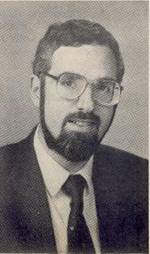
By Rabbi Marc D. Angel
(Republished with the permission of Rabbi Marc D. Angel1.)
In the early 1970s, shortly after I had begun my rabbinical service to Congregation Shearith Israel, the historic Spanish and Portuguese Synagogue of New York City, I attended a shiur, a lecture, at Yeshiva University given by the recently elected Rishon leZion, Rabbi Ovadya Yosef. As a young Sephardic rabbi, I was eager to hear the words of this prominent and erudite Sephardic rabbinic leader. The message of that shiur made a great impression on me and has remained with me to this day.
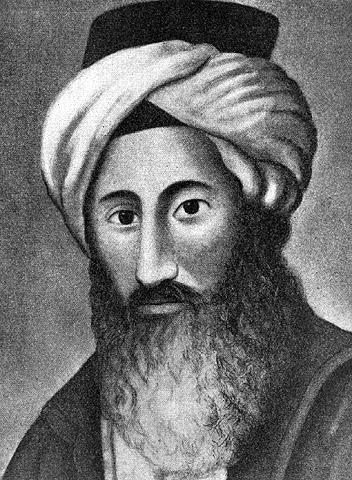
Rabbi Yosef, drawing on a passage from the Hidah (Rabbi Hayyim Yosef David Azulai), suggested a distinction between the Ashkenazic and Sephardic approaches to halakha. Historically, the Hidah noted, the Ashkenazim tended toward the quality of “gevurah,” strength. They viewed halakhic stringencies as a positive expression of love of God. The stricter the demands of halakha, the more self-sacrifice and heroism were entailed in fulfilling the commandments. In contrast, the Sephardim tended toward the quality of “chesed,” compassion. They viewed halakha as a loving means of serving God. Whereas Ashkenazim veered toward halakhic stringency, Sephardim tilted toward halakhic leniency. As Rabbi Yosef said: “The Sephardic rabbis are of the school of Hillel, tending toward chesed, and they do not have stringencies; they walk on the ‘king’s highway.’ However, Ashkenazic rabbis tend toward gevurah, and are from the school of Shammai who were strict.” Rabbi Yosef assured his audience that he himself was of the school of Hillel, and wished that “the Ashkenazim would be in order as we are.”2
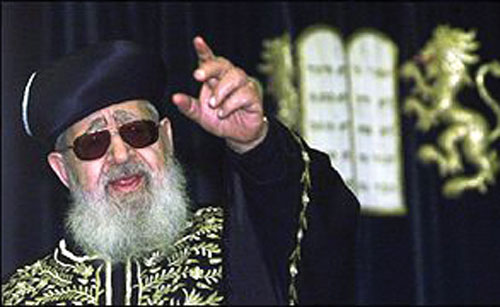
Rabbi Yosef’s description of Sephardic and Ashkenazic halakhic attitudes was surely stereotypical. Throughout the ages, Ashkenazic sages could be counted among those who ruled leniently; and Sephardic sages could be included among those who favored stringencies. Still, the generalized view of Rabbi Yosef is important because it sheds light on how Sephardic sages (and Ashkenazic sages) viewed themselves and their roles. If a rabbi saw himself as part of a tradition that had a particular halakhic tendency, he was more likely to adopt that tendency himself. Rabbis whose tradition stressed a gevurah approach would consciously or unconsciously tilt toward stringent rulings and interpretations; rabbis whose tradition placed a premium on chesed would consciously or unconsciously tilt toward lenient rulings and interpretations.
Justice Benjamin Nathan Cardozo, in a lecture he delivered at Yale University, observed that no judge can be entirely objective and impartial. He said:
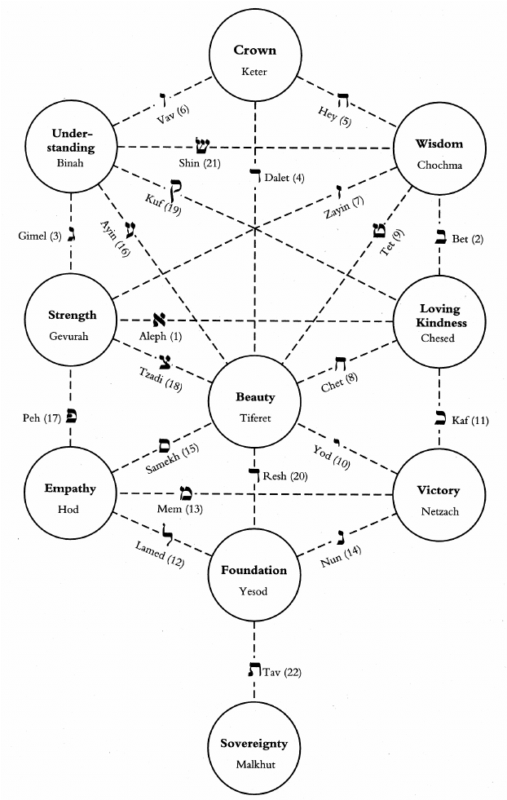
“There is in each of us a stream of tendency, whether you choose to call it philosophy or not, which gives coherence and direction to thought and action. Judges cannot escape that current any more than other mortals. All their lives, forces which they do not recognize and cannot name, have been tugging at them—inherited instincts, traditional beliefs, acquired convictions; and the resultant is an outlook on life, a conception of social needs…which, when reasons are nicely balanced, must determine where choice shall fall….We may try to see things as objectively as we please. None the less, we can never see them with any eyes except our own.”3
Part of the “stream of tendency” within the Sephardic rabbinic tradition is the emphasis on chesed. Sephardic rabbis and laity alike have the general feeling that the Sephardic tradition is compassionate, tolerant, and sympathetic to the human predicament. This self-image serves as a self-fulfilling prophecy; because we have this view of our tradition, this leads us to conduct ourselves and make decisions staying true to this idealized self-image. When Rabbi Ovadya Yosef, echoing earlier generations of Sephardic sages, stated that Sephardim are followers of the school of Hillel, then the new generations of Sephardic rabbis absorb this attitude from the very civilization of which they are part. They see themselves as agents of chesed—and thus they internalize the value of chesed in their views on life and law.
I pondered the words of Rabbi Yosef in the context of my own upbringing in the Sephardic community of Seattle, Washington, among Jews of Judeo-Spanish background. It seemed eminently true to me that the Sephardic approach to religion and life was characterized by chesed, optimism, and a spirit of inclusiveness and hospitality. This is what I learned from my parents and grandparents; this is what I learned from my elders and my rabbis.

After hearing Rabbi Yosef’s shiur, I decided to move beyond personal reminiscences and to try to address this issue in a more objective, scholarly fashion. I wrote an article for Midstream Magazine (August/September, 1975) entitled “A Sephardic Approach to Halakhah,” in which I drew on the comments by Rabbi Yosef and on responsa by a number of Sephardic sages. I noted:
The Sephardic approach to halakhah stressed the idea that the law is a practical guide to human behavior. It is not an ivory tower subject, not a metaphysical system, not the preserve of an intellectual elite….Since Sephardic scholars studied texts with the goal of applying their rules directly to actual situations, they had to remain sensitive to the needs of people. This very sensitivity kept the quality of chesed alive.4
As I continued my studies on this topic—especially through the writings of Rabbis Eliyahu Hazan, Benzion Uziel, and Haim David Halevy, I conceived of two ways for a rabbi to answer a halakhic question.5 In one scenario, the rabbi hears the question and then goes to his library of halakhic volumes to do research and to seek an answer. In the other scenario, the rabbi hears the question and then looks carefully into the eyes of the person who has asked the question. What is this person’s situation? How will the rabbi’s answer impact on his/her life? What are the broader ramifications of the answer on his/her family and community? In the first case, the rabbi views a halakhic question as an abstract search for truth: the books have the answer. In the second case, the rabbi views a halakhic question in the context of the questioner’s life, and only then goes to his halakhic tomes. The sages who are my models of halakhic integrity and chesed would, I imagine, first look into the eyes of the questioners, and only then consult the halakhic books.
In this essay, I elaborate on models of Sephardic rabbinic leadership—models that have so much to say to contemporary rabbis and laypeople of all backgrounds. This is not an ‘ethnic study’, but an exploration of a vital aspect of Jewish religious life relevant to the entire Jewish people. I draw on my own observations as a Sephardic rabbi with over 41 years of experience, as well as on what I have learned from my years of research and writing in the field.
The late Professor Meir Benayahu published a book on the nature of the rabbinate in the Sephardic world.6 He listed various titles by which Sephardic rabbis were known, and described the rabbinic functions and responsibilities.
One of the rabbinic titles was Marbitz Torah—a disseminator of Torah. The rabbi was expected to be thoroughly steeped in rabbinic literature, to be competent to serve as a decisor of halakhic questions, to serve on the local rabbinical court (Bet Din), to be responsible for matters relating to kashrut, mikveh, eruv, and so forth. He was expected to teach Torah to the community and to oversee the community’s education system. The function of rabbi as Marbitz Torah was well-described by Rabbi Benzion Uziel:
Every Jewish community is obligated to appoint a distinguished rabbi, an expert in legal opinions and rulings, to teach them the law of the Torah in all questions of what is forbidden and permitted, impure and pure, right and wrong; to teach them the ways of Torah and mitzvah, kindness and generosity in their personal and communal lives; to bring them closer to Torah and to the love of God, His Torah, the people and land of Israel; and to dedicate himself body and soul to all the spiritual possessions of the people, so that the name of Heaven and the name of Israel will be sanctified by his work; to unify the entire community and to gather them together for Torah study and prayer in the synagogue and study hall; and to work with the public on behalf of all communal needs and charitable institutions.7

Another title applied to Sephardic rabbis was ‘Hakham’. A Hakham was certainly expected to be learned in the sacred texts of Judaism—but the title implies more than mere erudition. It implies wisdom. The Hakham was a wise man who had keen insight into human psychology; he could draw on the Bible, Talmud, Midrash, Kabbalah, and Mussar literature, but he also had the innate sense to know how to apply these texts to real-life situations. He had a rational bent and a mystical bent; he was aware of the larger problems and issues confronting his society. People knew they could turn to the Hakham for proper guidance, for counseling on matters of deep concern.
Sephardic rabbis were also known as ‘Haver hai’r’, literally, ‘friend of the city’. While ‘haver‘ has the talmudic connotation of someone known for punctiliousness in the laws of ritual purity and impurity, the word also reflects the popular usage—a friend. The rabbi was not to be an aloof scholar, but a person of the people and with the people. His life was bound up with the lives of his community. In a very real and direct sense, the rabbi was a friend to his community; he cared for them, looked out for their wellbeing, and identified with their needs and aspirations.
In 1968, when I was still a rabbinical student, my wife and I travelled to Europe and Israel. One of our stops was Istanbul. We had the honor of spending Shabbat with Rabbi Nissim Behar, one of the community’s outstanding rabbinic personalities. Rabbi Behar, although earning his living in business, devoted numerous hours to teaching young and old. He wrote books in Ladino, presenting the teachings, laws and customs of Judaism in a language that was accessible to his community. He taught young men who aspired to become learned in Torah, some of whom went on to become rabbis in their own rights.
Rabbi Behar asked my wife and me to accompany him on Friday as he shopped for Shabbat groceries. He stopped at one produce stand and bought some potatoes and onions. He stopped at another shop to buy apples and pears. He stopped yet again at another little market to buy tomatoes and cucumbers. I asked him, “Why are you stopping at so many stores? You could have bought all these things at the first place and saved a lot of time and trouble.” Rabbi Behar looked at me kindly and replied, “All these merchants are members of our community. They all need parnasah (income). They all need to know that the rabbi supports their work.” Rabbi Nissim Behar was not just a ‘Marbitz Torah’, and not merely a ‘Hakham’; he was a ‘Haver haIr’, a friend, a person who genuinely cared about his community members. He worried not only about their spiritual needs, but also about their material well-being.
As a young rabbi, I learned much from my teacher Hakham Solomon Gaon, with whom I studied at Yeshiva University, and to whom I turned for guidance for many years thereafter. I once complained to Hakham Gaon that I was called upon by various organizations and committees to attend their events and meetings. I felt I should be exempt from these communal responsibilities, so that I could devote more time to my studies. I thought the Hakham would support my request. Instead, he gently rebuked me. He said: the people who devote their time and effort on behalf of the community need to know that the rabbi is with them. They need to see the rabbi, to hear the rabbi’s suggestions, to know that the rabbi appreciates and participates in their work. Yes, you need time to study; but you also need to devote time to working with members of the community. Hakham Gaon, like Rabbi Behar, was a Haver haIr, a friend of the community.
Rabbi Behar and Hakham Gaon were living examples of a Sephardic rabbinic tradition that placed high value on the rabbi’s role as a participant in the life of the community. Rabbi Eliyahu Zini of Haifa wrote an important article in which he lamented the gradual disappearance of this kind of rabbinic model. He referred to his grandfather, who had been a rabbi in various Sephardic communities, who would “visit each Jew of the community in his place of work, in order to become familiar with his problems and needs, and to guide him accordingly.”8 Rabbi Zini pointed out that many Sephardic rabbis earned their livings in businesses and trades, and did not rely on the rabbinate for their incomes. When rabbis are engaged in business, or when they at least become familiar with the business lives of the members of their community, they have a better grasp of reality than those rabbis who spend their days in the study hall. They are better able to reflect chesed in their halakhic rulings, in their interpersonal relationships, in their outlook on life.9 Rabbi Zini noted that the contemporary trend in the ‘yeshiva world’ idealizes the rabbinic scholar who studies Torah day and night, who is provided sustenance from charity rather than from his own labor. Such rabbis are disconnected from the ‘real world’ and from the general public. They may become learned in the ancient texts, but they do not naturally achieve the insights of a Hakham or the loving-kindness of a Haver haIr. When Torah is divorced from life, it becomes an artificial construct relevant only to self-selected scholars who function within a narrow, self-contained society of their own.
Whereas Sephardic models of rabbinic leadership stressed involvement in all aspects of the life of the community, non-Sephardic models have often followed a different track. In some circles, it was considered to be beneath the rabbi’s dignity to engage in business, to spend time on the nitty-gritty details of communal life. Rather, the rabbi was supposed to devote himself to Torah study, and to be above the fray of public life. Dr. Isidore Epstein reflects this attitude in his description of the role of rabbi in fourteenth-century Algeria. Dr. Epstein noted that the rabbis had multifarious functions, and this fact testifies to the low standard of Jewish culture of North African Jewry. In adverting to Jewish past and present day history, we cannot fail to notice that wherever there is a strong, virile, and advanced Jewish life, there the tendency is to keep the rabbinical office distinct from other callings; and the combination of rabbinical charges with other functions is a sign of decadence and of lack of appreciation of learning as such.10
Dr. Epstein thought it was a sign of spiritual decadence if the rabbi had to function as a school teacher, ritual slaughterer, and leader of prayers, and that such a rabbi suffered from “a consequent lowering in his prestige and rabbinical authority.”
Yet, viewed from a different perspective, Dr. Epstein’s comments might be paraphrased in an entirely different manner. The rabbis of North Africa were not an insulated, isolated elite who dwelled in ivory towers. Rather, they were involved in all facets of their community’s life, and therefore were close to the people and their needs. A virtue of these rabbis was that they were not aloof from the people, but they were the ones who taught school, who prepared kasher meat, who led the synagogue prayers and read the Torah portions to the public. It is no shame to be in the model of Haver haIr; on the contrary, this model helps the rabbi attain the qualities of Hakham and Marbitz Torah on a more profound level.
In recent years, the classic nature of Sephardic rabbinic leadership has lost much of its historic luster. For a variety of sociological and psychological reasons, there has been a sea change in Orthodox rabbinic leadership in general—and an even more profound change in Sephardic rabbinic leadership. The upsurge in the influence of extreme Haredi religious authorities has dragged much of Orthodoxy ‘to the right’. The so-called Modern Orthodox or Religious Zionist rabbis have all but ceded total authority to the Haredi rabbinate in almost every area of religious life. Modern Orthodox/Religious Zionist rabbinic figures have increasingly adopted Haredi halakhic positions, styles of leadership—even Haredi styles of dress. Israel’s Chief Rabbinate, long a bastion of Religious Zionism, has become ‘haredized’ to a significant extent, and no longer can be said to represent a Modern Orthodox/Religious Zionist agenda. On the contrary, it constantly seems to seek approval from the Haredi world, rather than strengthening and promoting its Religious Zionist base.
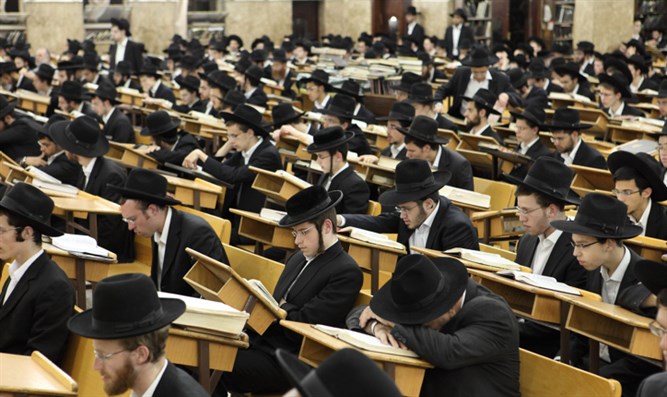
The Sephardic rabbinic world has been strongly affected by the general shift to the right. Indeed, many (most?) Sephardic rabbis have been trained in Ashkenazic yeshivot; have adopted Ashkenazic modes of Torah study and halakhic decision-making, and even have adopted Ashkenazic garb. They have moved more and more away from ‘chesed‘ and more and more toward ‘gevurah’. They have come to stress the rabbinic role of Marbitz Torah, and to under-appreciate the roles of Hakham and Haver haIr.
Over the years, many Sephardic rabbis from Israel have visited my community in New York in order to raise funds for their institutions. Often, these rabbis have come dressed in long black coats and black hats, in the Ashkenazic Haredi style. When I have asked them about their garb, invariably they have responded: we wear these clothes because this is the uniform of rabbinic scholars; if we dressed differently, we wouldn’t be taken seriously. In the early 1990s, I met with the Sephardic Chief Rabbi Mordecai Eliyahu, and I asked him why the Sephardic rabbis in Israel tend to dress in the Ashkenazic style. He smiled benevolently, and said that this was the generally accepted mode of dress for rabbis. When I urged him to raise his voice on this issue and to encourage Sephardic rabbis not to capitulate to Ashkenazic fashion dictates, he indicated that the battle was already lost and it would be a waste of time to try to fight the status quo.
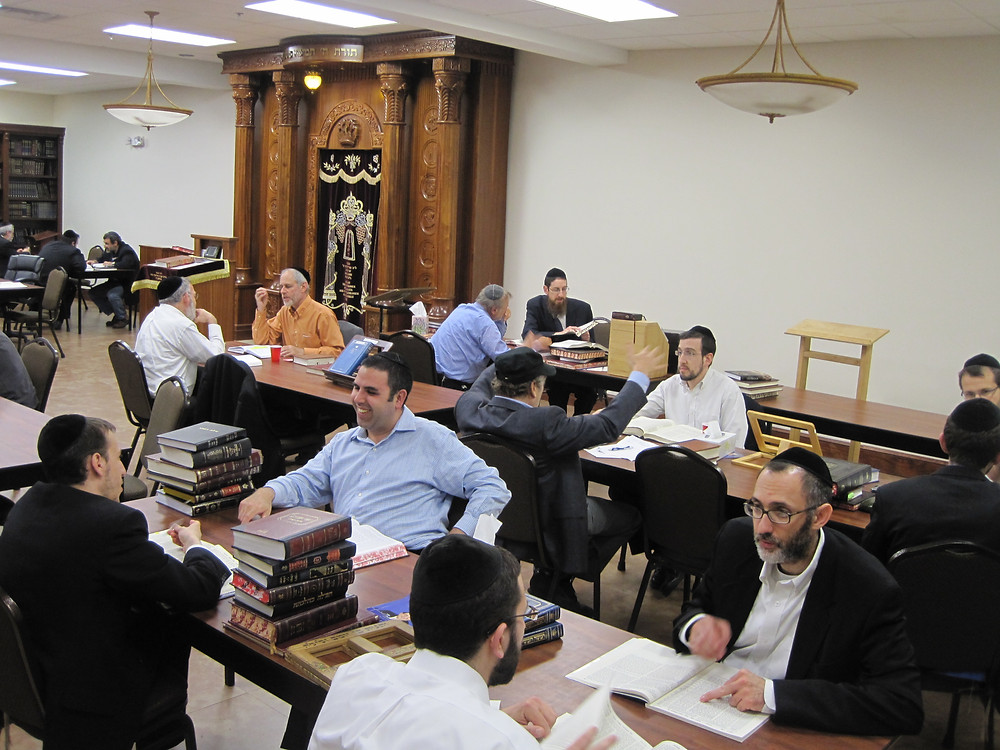
The Sephardic adoption of external Haredi garb is a reflection of the adoption of Haredi attitudes as well. This includes the glorification of the ‘Kollel’ system, where students receive stipends to study Torah day and night rather than find gainful employment; where they receive little or no general education outside of Torah study; where they avoid military service in Israel; where they become isolated from the life and concerns of the general public. I have been visited by Israeli Sephardic rabbis who have wanted donations to their Hareidi-type yeshivot, including one who asked for money for his “Sefardishe Koylel.”
Rabbi Ovadya Yosef, although surely still a representative of the chessed tradition of Sephardic sages in matters of halakha, became a political figure with the establishment of the Shas party in Israel. Political life often entails getting one’s hands dirty with compromises, with back-room maneuvering and negotiating. In order to gain positions of power and government funding for the institutions of Shas, trade-offs had to be made. These political dealings have tended to tarnish Rabbi Yosef’s reputation among segments of the population who have come to view him as another political hack fighting for his own piece of the political pie. Moreover, he has made many public statements reflecting a very narrow worldview, for example, that women’s place is in the kitchen; that Israeli soldiers died in Lebanon because of sins; that non-Jews were created to serve Jews, and so forth. He has promoted an educational approach that stresses Torah study and the Kollel system, rather than an educational system that seriously teaches general subjects and trains students for future university study and and/or gainful employment.
Rabbi Yosef’s example has been followed by many Sephardic rabbis in Israel and the Diaspora. Sephardic Hareidim, no less than Ashkenazic Haredim, have promoted an obscurantist, authoritarian, and fundamentalist view of religion.
Some popular Sephardic rabbis have taken on the roles of wonder workers—ready to write magical amulets, to bless water or whiskey with healing powers, to recite kabbalistic incantations for the benefit of those who patronize them. They have promoted a folk religion steeped in superstition. While attracting a following among some elements of the population, they have repelled thinking, rational Jews, and have alienated the educated classes from religion.
At a time when the Jewish people in Israel and the Diaspora desperately need intellectually sophisticated rabbinic leadership, the current trends in Orthodox—Ashkenazic and Sephardic—rabbinic circles are moving in the wrong direction. While stressing the role of Marbitz Torah, the roles of Hakham and Haver haIr have been downplayed—much to the detriment of the rabbinate and the spiritual health of the Jewish people. Rabbis have increasingly tilted toward gevurah instead of chesed; stringency in Jewish law has become fashionable even among Sephardic rabbis. Instead of Hakhamim and Havrei haIr who feel close to the people, and who strive to understand the real world in which people live, modern-day rabbis have grown more distant from the general public outside their own immediate group of followers and their financial supporters (whether or not these wealthy people are religious themselves). They seem to believe that they have the Truth, and they feel little affection or responsibility for those who do not share this Truth. They preach a midrashic/kabbalistic/authoritarian brand of religion that appeals to those satisfied with a simplistic religious worldview—but that alienates thinking, independent, and educated Jews. They are raising a generation of intellectual sheep, fostering a religious way of life that is divorced from the greater needs of society. They are encouraging a way of life that leads young men to study in a Kollel rather than to earn a livelihood in the market place, and are sheltering students from serving in the Israeli military. They limit intellectual and social options for women by insisting on the narrowest interpretations of Jewish law and custom. They create a Judaism that is more like a sect than a world religion.
To change the deficiencies in the status quo of Sephardic rabbinic leadership, the community as a whole needs to take action and responsibility. We need to support and encourage those rabbis who personify the best in our tradition, rabbis who fulfill the roles of Marbitz Torah, Hakham and Haver haIr. We need to give strength to those rabbis who stand for chesed, rather than gevurah; who devote themselves to the well-being of their communities in a loving and inclusive manner; who espouse an intellectually vibrant and compassionate Judaism. We ought not support those rabbis and institutions which seek to ‘haredize’ the Sephardic community, nor ought we donate our funds or lend credibility to wonder-working rabbis who foster a pseudo-kabbalistic, superstition-prone brand of religion. Are we up to this historic responsibility, or will we allow ourselves and our coming generations to continue the slide into an obscurantist, authoritarian, superstition-ridden Judaism?
When I was a young rabbi, I believed that the classic models of Sephardic rabbinic leadership provided a responsible and meaningful example for all of world Jewry. Forty years later, in spite of all the negative signs that abound, I still believe this to be true.
Notes:
1 Rabbi Marc D. Angel is Founder and Director of the Institute for Jewish Ideas and Ideals, www.jewishideas.org. Rabbi Emeritus of Congregation Shearith Israel in New York City, he is author and editor of 29 books, many dealing with aspects of Sephardic history and culture. Among his recent books are Foundations of Sephardic Spirituality: The Inner Life of Jews of the Ottoman Empire (Jewish Lights, 2006); and Maimonides, Spinoza and Us: Toward an Intellectually Vibrant Judaism (Jewish Lights, 2009), both of which won awards from the National Jewish Book Council. His most recent book is a collection of thoughts on the Torah portions of the week, Angel for Shabbat (Institute for Jewish Ideas and Ideals, 2010).
2 Rabbi Yosef’s words, which were later published in the Hebrew journal, BaMa’arakha, Adar I, 5733, are quoted by Rabbi Binyamin Lau, Hakhamim, vol. 1, Beit Morasha, Jerusalem, 2007, p. 196.
3 Benjamin Nathan Cardozo, The Nature of the Judicial Process, Yale University Press, New Haven, 1921, pp. 12–13.
4 Ibid., p. 68
5 I have written about a Sephardic approach to halakha and life in my books, The Rhythms of Jewish Living: A Sephardic Approach ( New York: Sepher-Hermon Press, 1986); Voices in Exile: A Study in Sephardic Intellectual History (Hoboken: Ktav Publishing House, 1991); Loving Truth and Peace: The Grand Religious Worldview of Rabbi Benzion Uziel (Northvale: Jason Aronson, 1999); Rabbi Haim David Halevy: Gentle Scholar and Courageous Thinker (Jerusalem: Urim Publications, 2006); and Foundations of Sephardic Spirituality: The Inner Life of Jews of the Ottoman Empire (Woodstock: Jewish Lights, 2006). On Rabbi Eliyahu Hazan and other Sephardic sages, see Norman A. Stillman, Sephardi Religious Responses to Modernity (Oklahoma: University of Oklahoma Press, 1995); and Zvi Zohar, He’iru Penei haMizrah (Israel: HaKibbutz HaMeuchad, 2001).
6 Meir Benayahu, Marbitz Torah (Jerusalem, 1953). Although I refer to rabbinic titles cited by Prof. Benayahu, the elaborations in this essay are my own.
7 Benzion Uziel, Shaarei Uziel, vol. 1 (Jerusalem, 5751), pp. 51–52. See also my book on Rabbi Uziel, chapter 4.
8 Eliyahu Zini, “Kera’ beAhdut,” in Yehuda Shaviv, ed., Mamlekhet Kohanim veGoy Kaddosh (Jerusalem, 5749), p. 72.
9 Rabbi Haim Amsalem wrote an important monograph, Gadol haNehene miYegio (Jerusalem, 5770), in which he cites numerous rabbinic sources lauding the virtue of working for a living. Rabbi Amsalem opposes the Kollel system, which encourages men to study Torah day and night, and not earn their livelihoods through work in the marketplace. Although some especially gifted students might be maintained in the Kollelim, the majority of the students should be encouraged to find gainful employment. Because of this “radical” position, Rabbi Amsalem has been vilified by the Hareidi world, Sephardic and Ashkenazic!
10 Isidore Epstein, The Responsa of Rabbi Simon b. Zemah Duran as a Source of the History of the Jews in North Africa (New York:Hermon Press, 1968), pp. 58–59.


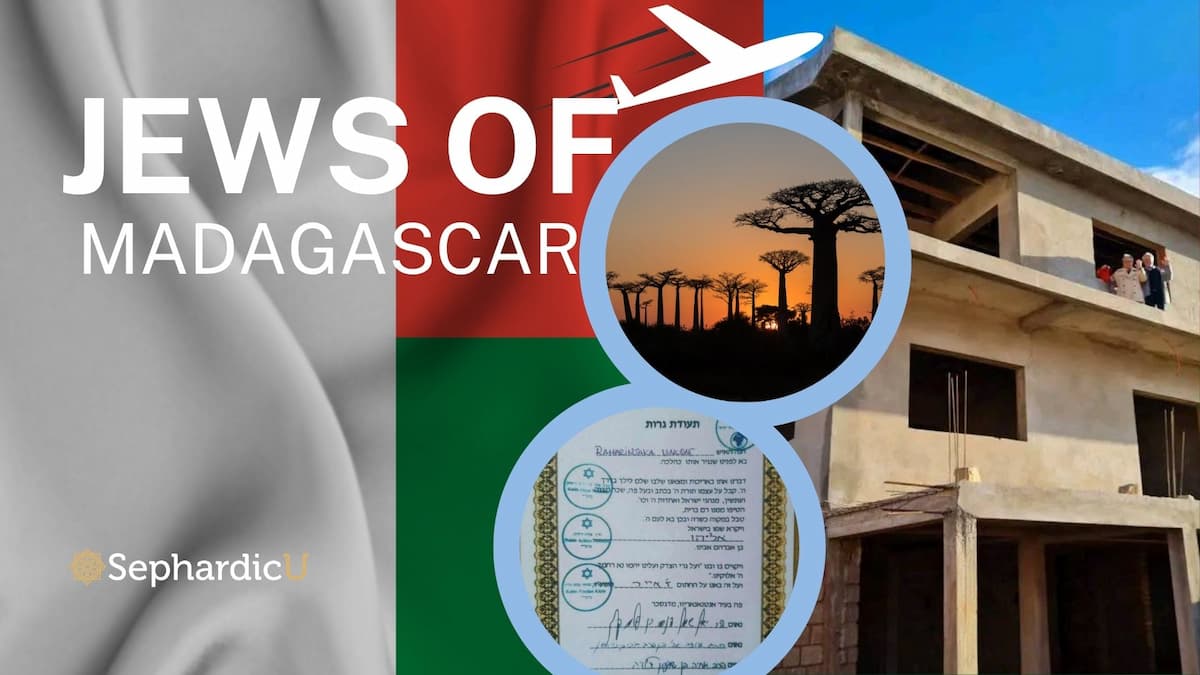




Ohr HaChaim Yomi – Emor